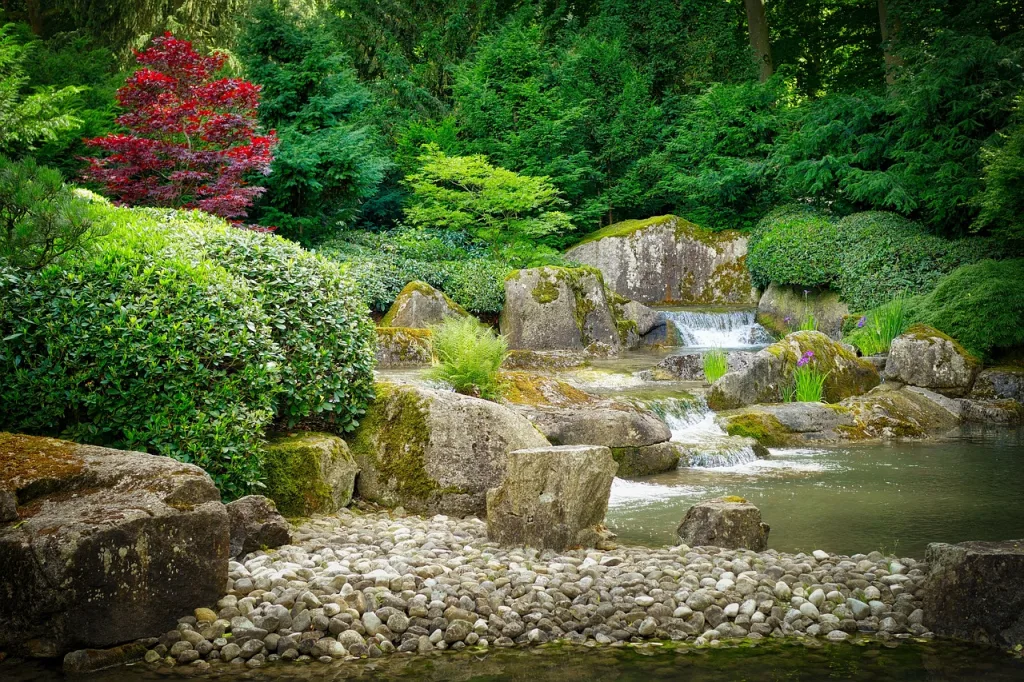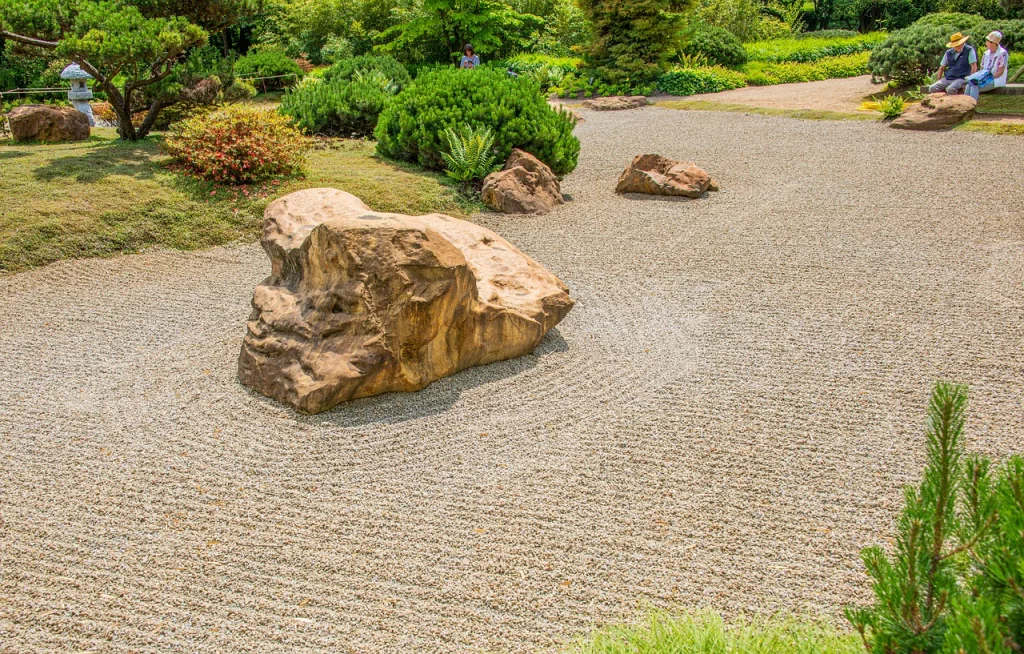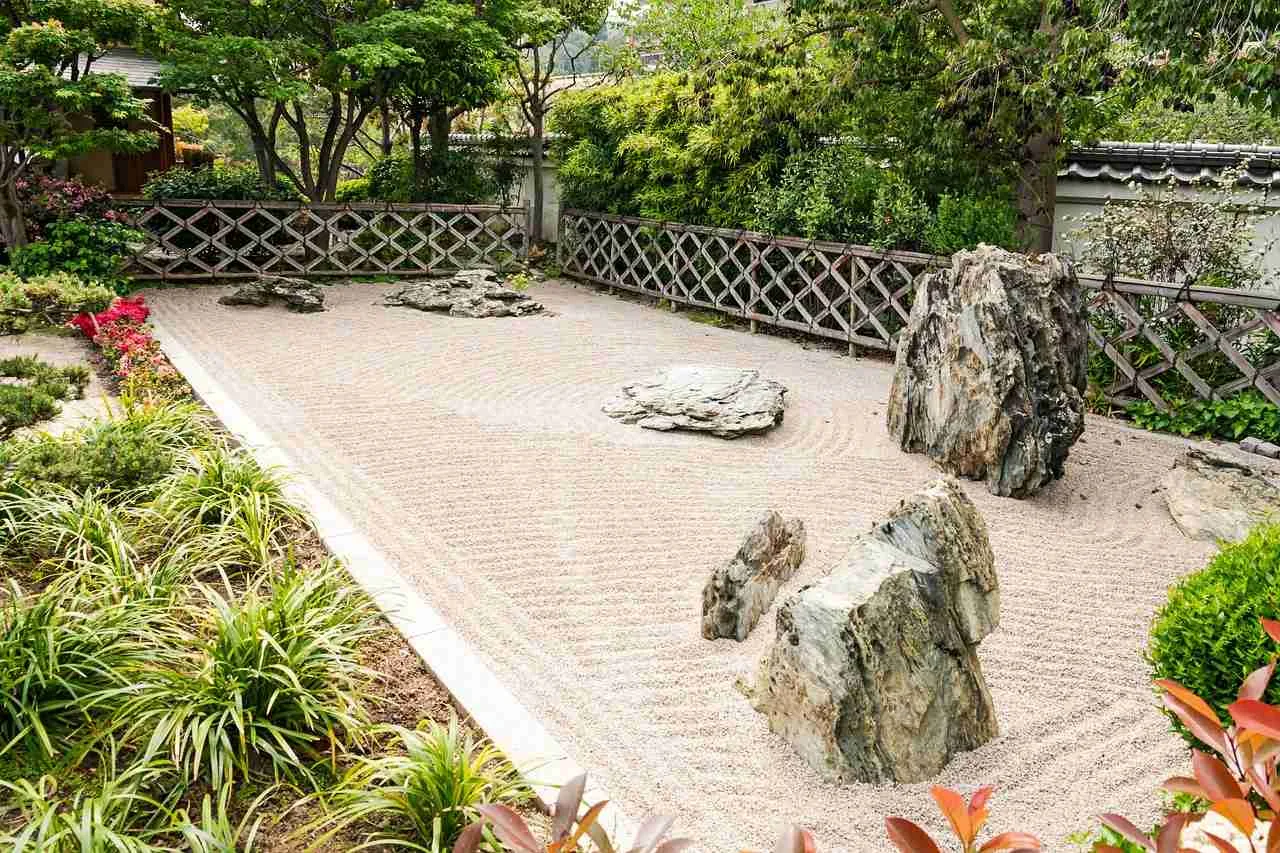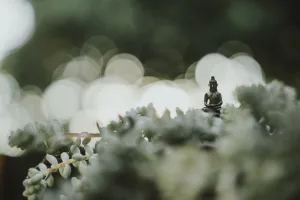In the enchanting world of Japanese gardens, selecting the perfect type of gravel is essential to create a harmonious and serene atmosphere. To evoke the true essence of a traditional Japanese garden, you must carefully consider factors such as color, texture, and size. Whether you want to replicate the Zen tranquility or the elegance of a traditional tea garden, understanding the various types of gravel available and their characteristics is crucial. Discovering the ideal gravel for your Japanese garden is like finding the missing piece of a puzzle, completing the overall aesthetic and invoking a sense of tranquility and balance.
Understanding the Concept of a Japanese Garden
History and Influence of Japanese Gardens
Japanese gardens have a rich history dating back thousands of years. They were initially influenced by Chinese gardens and began to develop their own unique style during the Heian period in Japan. These gardens were originally built as spaces for the ruling elite to relax and meditate. Over time, they became more accessible to the general public and evolved into symbols of tranquility and harmony.
Characteristics of a Japanese Garden
Japanese gardens are known for their simplicity, balance, and natural beauty. They are designed to create a sense of serenity and draw inspiration from the natural landscape. Key characteristics of Japanese gardens include the use of water features such as ponds or streams, carefully selected plants and trees, and the incorporation of various elements like stones, lanterns, and gravel.
The Importance of Harmony in a Japanese Garden
Harmony is a crucial aspect in Japanese garden design. It is the art of finding balance and creating a harmonious relationship between the different elements within the garden. This principle of balance applies to both the physical and spiritual aspects. Each element, from the placement of stones to the choice of plants, is carefully considered to ensure they harmonize with one another and create a peaceful and serene atmosphere.
Role of Gravel in Japanese Garden
Ideal Attributes of Gravel in a Japanese Garden
The gravel used in Japanese gardens should possess certain ideal attributes to enhance the overall aesthetic and functionality. It should have a smooth texture, allowing for easy raking and maintenance. Additionally, the color of the gravel should complement the surrounding elements, such as plants and stones, while providing a natural and organic look.
Functions of Gravel in a Japanese Garden
Gravel serves several purposes in a Japanese garden. Firstly, it helps to create defined pathways and areas within the garden, guiding visitors through the space. It also acts as a mulch, helping to retain moisture in the soil and suppress weed growth. Additionally, gravel can be used to represent water or mimic the texture of a dry riverbed, adding depth and visual interest to the garden.
The Art of Raking Patterns on Gravel in Japanese Gardens
Raking patterns on gravel is a traditional practice in Japanese garden design. The patterns can vary from simple lines to more intricate and complex designs, such as waves or circles. Raking not only adds visual appeal but also represents the flow of water or waves, further enhancing the calming and meditative atmosphere of the garden. The art of raking requires skill and precision, as each line and curve is carefully crafted to maintain the desired pattern.

Various Types of Gravel
The Textures and Colors of Different Gravels
There are various types of gravel that can be used in a Japanese garden, each with its own unique texture and color. Pea gravel, for example, has a smooth and rounded texture, providing a gentle and soft appearance. River rock, on the other hand, has a more natural and irregular texture, adding a rustic and rugged element to the garden. The colors of gravels can range from earthy tones like browns and grays to vibrant hues like reds and blues, allowing for a wide range of design possibilities.
Size and Weight Considerations
When selecting gravel for a Japanese garden, size and weight considerations play a crucial role. The gravel should be small enough to allow for easy raking and shaping of patterns. Large, heavy gravel can be difficult to manipulate and may disrupt the overall balance and harmony of the garden. It is important to choose gravel that is proportionate to the size of the garden and the other elements within it.
Natural vs Manufactured Gravel
Both natural and manufactured gravel can be used in Japanese gardens, depending on the desired aesthetic and functionality. Natural gravel, such as river rock or crushed granite, provides a more authentic and organic look, blending seamlessly with the natural elements of the garden. Manufactured gravel, on the other hand, offers more control over size, shape, and color consistency, allowing for precise design and pattern creation.
Suitability of Pea Gravel for Japanese Gardens
Description and Properties of Pea Gravel
Pea gravel is a type of small, smooth gravel that is often used in Japanese gardens. It gets its name from its resemblance to small peas. It is typically composed of rounded stones and has a range of colors, including shades of brown, gray, and white. Pea gravel is known for its soft texture and pleasant crunching sound when walked upon.
Benefits of Using Pea Gravel
Pea gravel offers several benefits when used in Japanese gardens. Its small size and smooth texture make it easy to rake and shape into intricate patterns, allowing for the creation of beautiful and detail-oriented designs. Pea gravel also helps with water drainage, preventing puddling and maintaining the overall health of the garden. Additionally, it complements a wide variety of plants and stones, providing a versatile option for garden design.
Drawbacks of Pea Gravel
While pea gravel has many advantages, it also has some drawbacks to consider. Due to its small size, it can be easily displaced or shifted, requiring regular maintenance to keep the patterns intact. It may also be less suitable for larger gardens, as the small size of the gravel may not provide enough visual impact. Additionally, pea gravel can be more prone to weed growth, necessitating diligent weed control measures to maintain the garden’s pristine appearance.

Assessing River Rock for Japanese Gardens
Features and Characteristics of River Rock
River rock is a popular choice for Japanese gardens due to its natural and rustic appearance. It is often characterized by its irregular shape and texture, resembling stones naturally worn by water over time. River rock comes in various sizes and colors, ranging from smooth and round pebbles to larger flat stones.
Advantages of River Rock
River rock offers several advantages when used in Japanese gardens. Its natural appearance adds a sense of authenticity and blends seamlessly with the surrounding elements. Additionally, its irregular shape and texture provide a tactile and visually interesting experience for visitors. River rock is also durable and long-lasting, requiring minimal maintenance over time.
Potential Issues with River Rock
Despite its benefits, river rock may present a few challenges in Japanese gardens. Due to its uneven surface, it may be more difficult to create intricate raking patterns compared to smoother gravels. The irregular shapes of river rock can also make it more challenging to walk on, potentially posing a tripping hazard. Careful consideration should be given to the choice of river rock and its placement within the garden to ensure both aesthetic and practical considerations are met.
The Place of Crushed Granite in Japanese Gardens
Key Traits of Crushed Granite
Crushed granite is a type of gravel that is made from granules of granite stone. It is typically available in various sizes, from fine particles to larger chunks. Crushed granite has a rough surface texture and is characterized by its natural and earthy colors, usually ranging from shades of gray to brown.
Benefits of Crushed Granite
Crushed granite offers several benefits when incorporated into Japanese gardens. Its rough texture adds depth and visual interest to the overall design. Crushed granite can also help with water drainage, preventing the accumulation of excess moisture. Additionally, the natural colors of crushed granite blend harmoniously with other elements in the garden, enhancing the overall aesthetic appeal.
Drawbacks of Crushed Granite
One potential drawback of crushed granite is its rough and uneven surface, which may make it less ideal for intricate raking patterns compared to smoother gravels. It can also be more challenging to walk on, especially for individuals with mobility limitations. Careful consideration should be given to the specific design requirements and practical needs of the garden before choosing crushed granite as the primary gravel option.

Evaluating the Use of Lava Rock
Unique Attributes of Lava Rock
Lava rock is a type of volcanic rock that is commonly used in Japanese gardens. It is characterized by its porous and lightweight nature, typically featuring a reddish-brown or black color. Lava rock is created from cooled and solidified lava, resulting in a unique and textured appearance.
Pros of Using Lava Rock
Lava rock offers several advantages in Japanese garden design. Its porous nature allows for excellent water drainage, preventing waterlogging and maintaining optimal soil conditions for plants. The lightweight nature of lava rock makes it easy to handle and shape into desired patterns. Additionally, its distinct color and texture provide a bold and eye-catching element within the garden.
Cons of Lava Rock
Despite its benefits, lava rock may have a few drawbacks in Japanese gardens. Its rough texture and irregular shapes can make it more challenging to walk on, particularly for barefoot or elderly visitors. The dark color of lava rock may also absorb heat and raise the temperature in the surrounding area, potentially affecting plant health. Consideration should be given to the specific requirements and climate of the garden before choosing lava rock as the primary gravel option.
Impact of Local Climate on Gravel Choice
Effect of Temperature and Precipitation on Gravel
The local climate plays a crucial role in determining the suitable type of gravel for a Japanese garden. In areas with high temperatures and little rainfall, gravels such as crushed granite or lava rock may be more appropriate, as they can withstand the heat and require minimal water retention. In regions with colder climates and higher precipitation levels, gravels like river rock or pea gravel may be more suitable, as they allow for better water drainage and minimize the risk of freezing.
Harsh Weather Resilience of Different Granite Types
Different types of granite gravels have varying degrees of resilience to harsh weather conditions. Crushed granite, with its rough texture, is highly durable and can withstand extreme temperature fluctuations and heavy rainfall. However, the same cannot be said for all manufactured granite gravels. Some manufactured gravels may be more susceptible to erosion or discoloration over time, especially in areas with harsh climates. It is important to choose the appropriate type of granite gravel based on the specific weather conditions of the garden’s location.
Role of Seasonal Changes in Japanese Garden Maintenance
Seasonal changes can significantly impact the maintenance requirements of a Japanese garden. In colder seasons, gravels such as pea gravel or river rock can be easier to clean and maintain, as they are less likely to accumulate debris. However, these gravels may require more frequent raking to ensure patterns remain intact. In warmer seasons, lava rock or crushed granite may be more suitable, as they provide better drainage and are more resistant to weed growth. Regular monitoring and adjustments should be made to the gravel choice and maintenance routine based on the changing seasons.
Best Practices for Installing Gravel in Japanese Gardens
Preparing the Garden Ground for Gravel
Before installing gravel in a Japanese garden, proper preparation of the ground is essential. The area should be cleared of any existing vegetation or other materials that may interfere with the installation process. It is important to level the ground and create a solid base to prevent the gravel from shifting or settling unevenly. Adding a layer of landscape fabric can also help to further prevent weed growth.
Appropriate Placement of Gravel
The placement of gravel in a Japanese garden should be carefully considered to enhance the overall design and functionality. Gravel can be used to create pathways, define different areas, or even represent elements like water or islands. It is important to strike a balance between open spaces and gravel-covered areas to maintain a sense of harmony and flow within the garden. Experimenting with different layouts and configurations can help determine the most aesthetically pleasing and practical placement.
Useful Tools for Laying and Shaping Gravel
Several tools can be helpful when installing and shaping gravel in a Japanese garden. A rake with long and flexible teeth is essential for creating intricate patterns and maintaining them over time. A wheelbarrow or garden cart can be useful for transporting and distributing gravel evenly throughout the garden. For precision work, smaller tools like a hand tamper or a hand rake can be employed to shape and pack the gravel in tighter spaces.
Maintaining the Beauty of Gravel in Japanese Gardens
Cleaning and Caring for Gravel
Regular cleaning and maintenance are necessary to preserve the beauty of gravel in Japanese gardens. This involves removing any debris, fallen leaves, or weeds that may accumulate on the surface of the gravel. Using a rake or a leaf blower can help to keep the gravel clean and prevent the growth of weeds. A gentle spray of water can also be used to remove stubborn dirt or stains.
Replacing or Refilling Gravel Periodically
Over time, gravel in Japanese gardens may need to be replaced or refilled to maintain its pristine appearance. This is especially true for smaller gravels like pea gravel, which may be more prone to shifting or displacement. Periodically assessing the condition of the gravel and making necessary adjustments can help ensure that the patterns and overall design of the garden remain intact.
Ensuring the Longevity of Gravel Landscapes
To ensure the longevity of gravel landscapes in Japanese gardens, it is important to address any potential issues promptly. Regularly inspecting the gravel for signs of erosion, discoloration, or uneven settling can help identify and resolve problems before they worsen. Additionally, taking measures to mitigate the impact of extreme weather conditions, such as providing shade or additional drainage, can help preserve the integrity of the gravel and extend its lifespan.
In conclusion, the choice of gravel in a Japanese garden should be carefully considered to align with the principles of harmony, balance, and natural beauty. Each type of gravel has its unique attributes, benefits, and drawbacks, and their suitability depends on factors such as aesthetics, practicality, and local climate. By understanding the history, functions, and maintenance requirements of gravel in Japanese gardens, one can create a serene and captivating landscape that embodies the essence of Japanese garden design.




